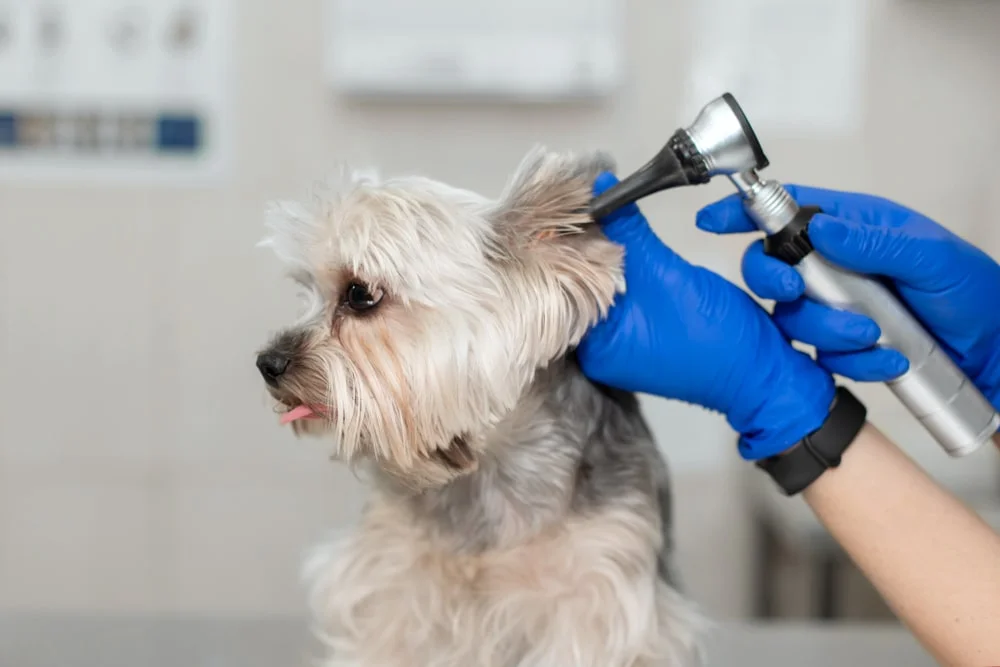PET HEALTH
The last week of September is known as Deaf Pet Awareness Week. Throughout this week many focus on highlighting the many breeds that are prone to deafness, how special and loving these pets are, and how you can work and train with your pet that is hard of hearing or completely deaf.
Thousands of dogs in the U.S. are born deaf every year, and many dogs also experience hearing loss from trauma, infections, or simply getting older. Deaf dogs can make loving and loyal pets, but they do require a little more research and work on the owner’s part.
Below we will discuss more information about deafness and hearing loss in dogs and how you can make your home the perfect place for a deaf dog.
Which Dog Breeds Are Most Prone to Deafness?
Some dog breeds are more prone to deafness than others. Breeds that are predisposed to congenital deafness (which means the animal can be deaf at birth) include:
- Australian shepherd
- Maltese
- Poodle (toy and miniature)
- Jack Russell terrier
- German shepherd
- Cocker spaniel
- Boston terrier
- Dalmatian
Senior dogs of any breed are also more susceptible to hearing loss.
There is also a scientific link between dogs with a white coat and deafness. A special layer of cells found in the inner ear gives dogs the ability to hear; this layer of cells comes from the same stem cell source as the cells that determine hair color. Without that stem cell, then, the dog’s body will both be white in color and will not be able to produce those hearing cells. This scientific finding suggests that dogs that are predominantly white in color could be more prone to hearing loss or deafness.
How Does Canine Deafness Work?
Owning a dog with partial or complete hearing loss can have some obstacles, but it’s still entirely possible for a deaf dog to live a full, safe, and happy life.
If a dog is not born deaf but loses its hearing later in life, causes of the hearing loss might include inflammation in the ear or a ruptured eardrum. Tumors or cancer that affect the nerves used for hearing can also cause deafness; so can trauma and infectious diseases. Some drugs and toxic materials (chemotherapy drugs, lead, mercury) can result in hearing loss too.
Dogs that are born deaf will never be able to hear. Dogs who experience hearing loss later in life, however, may have options to reverse or at least stop the hearing loss. Medical or surgical treatments are appropriate for some situations where the animal has inflammation in the outer, middle, or inner ear. Occasionally, dogs can use hearing aids as well.
Like all dogs, dogs with hearing loss need regular appointments with a vet. Dogs with hearing loss or dogs that are deaf should also have a physical examination and cleaning their ear regularly too.
How Can I Help My Deaf Or Hard of Hearing Dog?
If you have a dog who is completely deaf or beginning to experience hearing loss, there are several things you can do to help improve his or her quality of life. Not sure whether your dog has significant hearing loss? Check to see whether he or she is unresponsive to his or her name, verbal commands, and sounds such as the doorbell; a dog with hearing loss might also bark more than usual, tilt its head, and be difficult to wake up.
The first step to helping your deaf dog is safety: Do not let the dog outside by itself, as he or she won’t be able to hear traffic or other potential dangers. Keep a close eye on your dog at all times.
Once you’ve put any necessary safety precautions (like a strong fence or a bell on the collar) in place, change the way you interact with your dog. Work hard to not startle him or her; if your dog is asleep, put your hand where the dog can smell it and then gently touch your dog on the back.
The same goes for occasions when you’re leaving the house — find your dog, get its attention by a gentle tap on the back, and let him or her watch you go out the door. Let your dog know when you come back home, too.
You can also train your deaf or hard of hearing dog with hand signals.
Use the same hand signals that dog trainers use for basic commands with hearing dogs, or use American Sign Language for visual commands. You can also guide your dog by turning a light on and off or stomping on the ground. Some pet owners use a collar that vibrates gently to get their dog’s attention.
MetLife Pet Could Help You Cover Ear Care Costs
You may never know when a dog's hearing loss is going to begin or if a puppy will be born deaf. Hearing challenges could mean more vet visits to help keep dogs healthy and living great lives. MetLife Pet Insurance can help you cover vet bills for things like diagnostics, exams, surgeries, and vet specialist care. We even offer coverage for hereditary and congenital conditions. Explore our plans and prices by getting a free, personalized quote.

